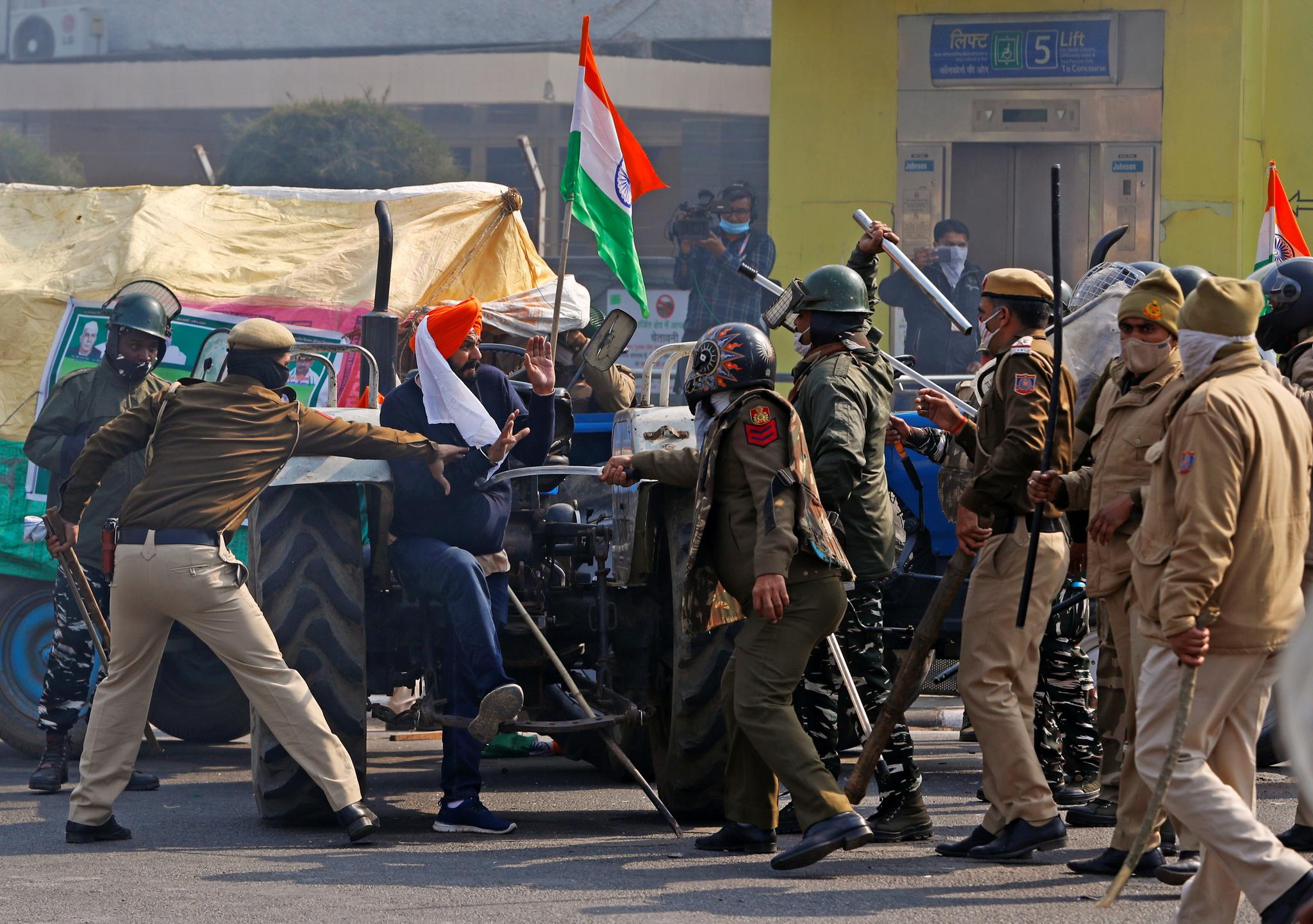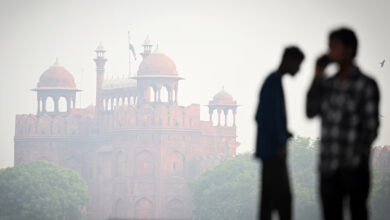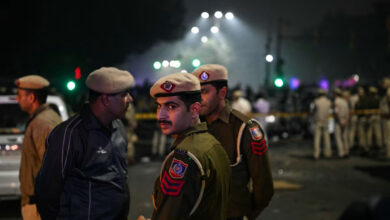
NEW DELHI (Reuters) – Thousands of Indian farmers protesting against agricultural reforms breached barricades on Tuesday to enter the historic Red Fort complex in the capital and hoist flags after clashing with police, who fired tear gas to scatter them.
Growers, angered by laws they say help large, private buyers at the expense of producers, have camped outside New Delhi for almost two months, posing one of the biggest challenges to Prime Minister Narendra Modi since he came to power in 2014.
The body of one protester draped in an Indian tricolour lay in a central Delhi street after the tractor he rode overturned in one of the clashes, killing him, said a witness, Vishu Arora.
“He died right there,” Arora added.
A Reuters witness saw at least five police and three protesters injured at the Red Fort, from whose ramparts Modi delivers an annual speech. Some of those who scaled its walls carried ceremonial swords.
The disorderly scenes and lingering swirls of gas on the outskirts of the capital were a sharp contrast with televised images of the serried precision of military marchers in an annual Republic Day parade in the city centre.
“Modi will hear us now, he will have to hear us now,” said Sukhdev Singh, 55, a farmer from the northern state of Punjab, who was among hundreds of protesters, some on horseback, who broke away from a key route of a tractor convoy by protesters.
From the city’s north they headed towards the government buildings in its centre. They commandeered cranes and used ropes to tear down roadblocks, forcing constables in riot gear to give way, Reuters witnesses said.
A second group rode tractors to get to a key central traffic junction, also breaching barricades after similar clashes with police. Domestic television channels showed images of several bloodied protesters.
Reuters could not immediately reach police officials for comment.
Protest organizer Samyukt Kisan Morcha said the groups swerving from set routes did not represent the majority of farmers, however.
“None of the leaders disappeared,” the grouping of farm unions said in a statement. “They are following the set routes.”
FARMER PRESSURE
Earlier, tens of thousands of bearded and turbanned farmers, many bundled against the winter cold, drove a convoy of tractors festooned with Indian and union flags along the city fringe.
Agriculture employs about half of India’s population of 1.3 billion, and unrest among an estimated 150 million landowning farmers worries the government.
Nine rounds of talks with farmers’ unions have failed to end the protests, as farm leaders rejected the government’s offer to delay the laws for 18 months, making a push for repeal instead.
“The farm organizations have a very strong hold,” said Ambar Kumar Ghosh, an analyst at New Delhi think tank the Observer Research Foundation.
“They have the resources to mobilize support, and to continue the protest for a long time. They have also been very successful in keeping the protest really focused.”
India showcases its military hardware with a parade every year on Republic Day, which marks the adoption of its constitution in 1950.
Reporting by Devjyot Ghoshal and Danish Siddiqui in Singhu, Anushree Fadnavis in Tikri and Adnan Abidi, Manoj Kumar, Mayank Bhardwaj and Alasdair Pal in New Delhi; Writing by Alasdair Pal; Editing by Clarence Fernandez
Image: Police officers scuffle with a demonstrator during a protest against farm laws introduced by the government, in New Delhi, India, January 26, 2021. REUTERS/Adnan Abidi




